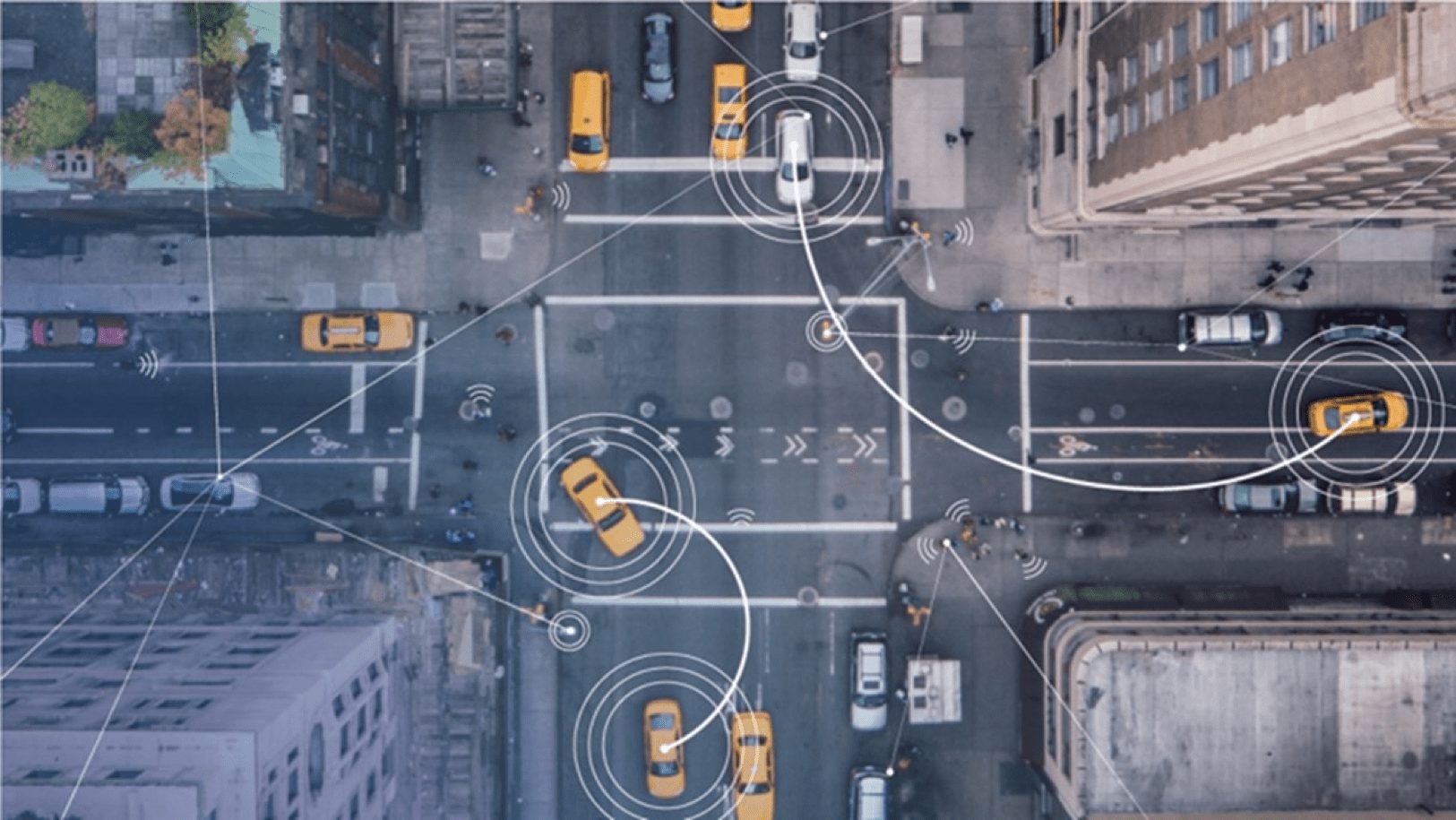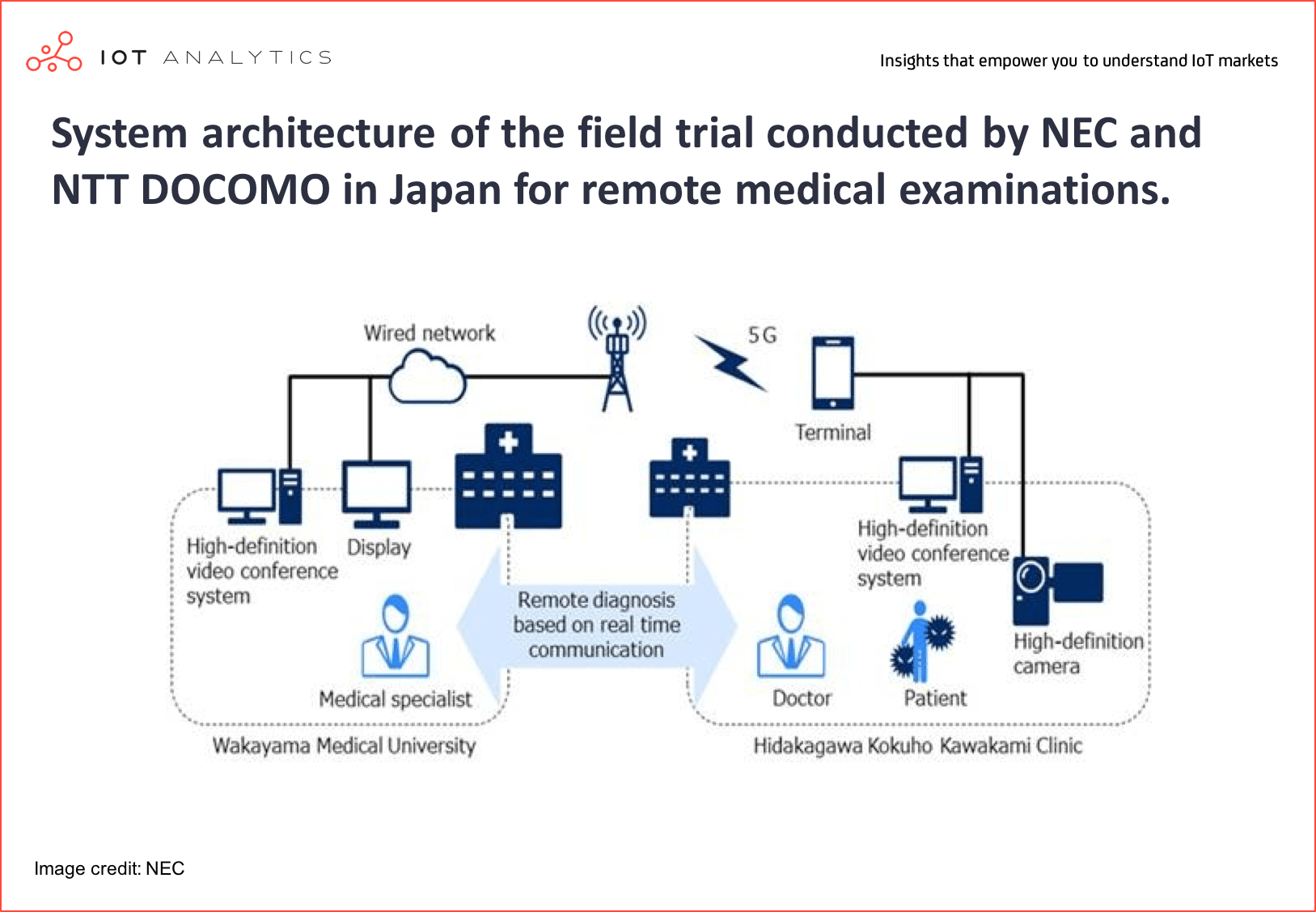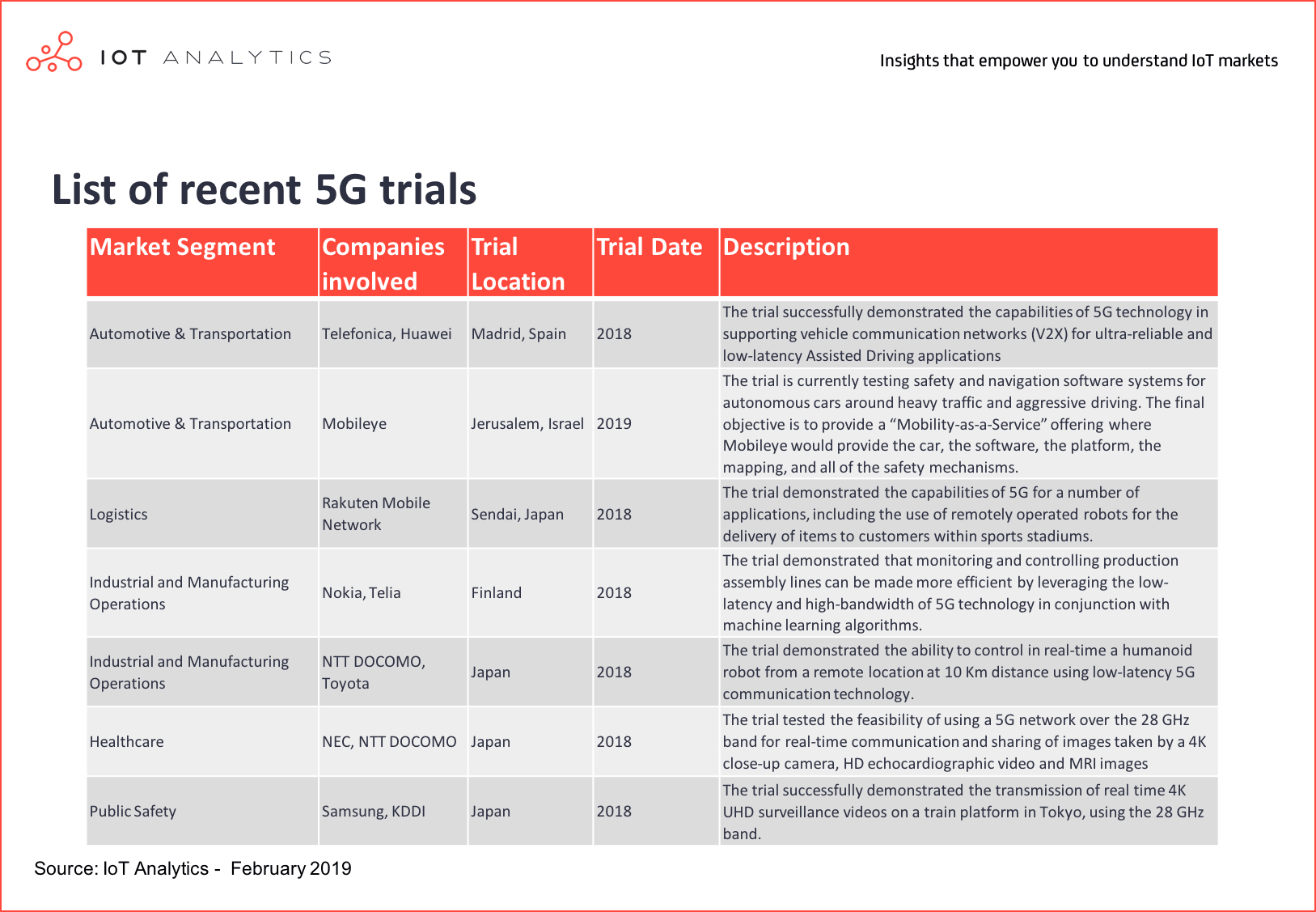Developments in 5G, artificial intelligence (AI) and IoT technologies are leading towards what is being hyped as the era of intelligent connectivity. While this fusion of technologies has the potential to change the way we live and work, there are still uncertainties and challenges that need to be addressed before the benefits can be realized.
Intelligent Connectivity: the fusion of 5G, AI and IoT
Intelligent connectivity is a concept that foresees the combination of 5G, the Internet of Things and artificial intelligence as a means to accelerate technological development and enable new disruptive digital services. In the intelligent connectivity vision, the digital information collected by the machines, devices and sensors making up the Internet of Things is analysed and contextualised by AI technologies and presented to users in a more meaningful and useful way. This would both improve decision-making and allow delivery of personalised experiences to the users, resulting in a richer and more fulfilling interaction between people and the environment surrounding them.
As artificial intelligence becomes increasingly sophisticated thanks to advances in computing power, the education of data scientists and the availability of machine learning tools for creating advanced algorithms, the Internet of Things is getting closer to becoming a mainstream
phenomenon. 5G represents the missing element to bring these technologies to new levels and enable the intelligent connectivity vision. The ultra-fast and ultra-low latency connectivity provided by 5G networks, combined with the huge amount of data collected by the Internet of Things and the contextualisation and decision-making capabilities of artificial intelligence technologies will enable new transformational capabilities in virtually every industry sector, potentially changing our society and the way we live and work.
Intelligent connectivity is expected to play a major role in five key areas:
- Transportation & logistics,
- Industrial & manufacturing operations,
- Healthcare,
- Public safety & security and
- Other sectors.
1. Transportation & Logistics
In the transportation sector, intelligent connectivity could lead to an increased level of road safety and efficiency resulting in a smoother traffic flow. While in the logistics sector, intelligent connectivity has the potential to improve efficiency and flexibility in the delivery of goods, making logistics faster and cheaper.

USE CASE 1: AI-based driver assistance and traffic monitoring systems.
Exploiting the low latency of 5G networks, road users and the roadside infrastructure could collect and share an abundance of real-time information. For example, data about the location and speed of vehicles, bikes and pedestrians on the road, weather and road surface conditions, traffic jams and other obstacles on the road. Intelligent traffic monitoring systems and AI-based on-board computers would then use this information to provide assistance to the drivers. For example, helping them avoid accidents and collisions with other vehicles,
or dynamically planning the best route to the destination.
USE CASE 2: Self-driving vehicles.
Eventually, 5G and AI will lead to reliable self-driving vehicles. These will be provided with an AI-based on-board computer that, based on data both collected by on-board sensors and provided by roadside units and other vehicles via the 5G network, will be aware of the vehicle’s surrounding environment and able to adjust to any situation. Self-driving vehicles will also lead to new Mobility-asa-Service models similar to what we have today with services like Uber but tailored for driverless public transport. The latter would eventually be less expensive than current public and private transport options, as they would allow savings in time and money needed to train and pay drivers.
USE CASE 3: Deliveries by unmanned vehicles.
5G networks will be able to support high volumes of both terrestrial and aerial unmanned vehicles, such as unmanned delivery robots and drones, and allow operators to precisely coordinate their movements, avoiding collisions with other unmanned vehicles, buildings or other static obstacles along their path. Drones, for example, are already a very promising means of delivering goods in a fast and secure way. Drones are particularly convenient when the end location is characterised by challenging terrain or congested roads, and they have a lower cost than current human-based delivery systems.
2. Industrial & Manufacturing operations
In the industrial sector, intelligent connectivity will lead to improved productivity and reduced human errors, while resulting in lower costs and increased worker safety. By enabling remote operations to industrial facilities, intelligent connectivity may also lower the need for on-site employees and thus increase the flexibility in choosing where to locate production facilities, as the latter would become independent on the geographical availability of skilled labour.
USE CASE 1: Factory automation and remote control of industrial robots.
5G’s high data-rates, ultra-low latency and high reliability would enhance the automation of industrial processes and the remote control of machines and robots. For example, machine learning algorithms can use data collected from sensors and cameras along a supply line to immediately alert an operator of any inconsistencies in the process or the system could automatically correct the mistake in real-time. 5G would also enable human operators to monitor and adjust the actions of industrial robots from a remote location and interact with them in real time using both haptic and visual feedback enabled by connected tools such as touch-sensitive gloves and virtual or augmented reality (VR/AR) headsets.
USE CASE 2: Remote inspections and maintenance, and worker’s training.
At the same time, tactile internet applications driven by Intelligent Connectivity would also enable conducting tasks such as inspections, maintenance and repairs remotely. This results in much lower costs and reduced risks related to operations in hazardous, inaccessible or inhospitable locations, such as in nuclear plants, oil rigs or mining sites. The same tools could also be used to perform or support workers training and simulate complex situations in a safe environment.
3. Healthcare
Intelligent connectivity will help provide a more effective preventive care at a more affordable cost while allowing healthcare managers to optimise the use of their resources. In addition, intelligent connectivity could also facilitate remote diagnosis and enable remote surgery, potentially revolutionising access to medical care that today is limited to the geographical location of medical experts.
USE CASE 1: Remote health monitoring and illness prevention.
5G’s high availability and its support of a massive number of connections is expected to help accelerate the adoption of wearable devices used for the monitoring of different biometric parameters of the wearer. As these
solutions become more commonplace, AI-based healthcare platforms will analyse the data collected from these devices to determine a patient’s current health status, provide tailored health recommendations and predict potential future issues. In addition, by having a more informed, real-time overview of the medical status of their patients, healthcare managers could optimise the use of their resources and make sure their clinics are always provided with enough medicine and medical tools
and equipment.
USE CASE 2: Remote diagnosis and medical operations.
The tactile nature of intelligent connectivity internet applications enabled by the high speed, low-latency, and ultra-high reliability delivered by 5G networks, will enable doctors to provide a full medical examination from remote locations with full audio-visual and haptic feedback, making it possible to provide a diagnosis anywhere at any time. With 5G and IoT, it would even be possible for doctors to perform remote surgery by operating specialised robots.
4. Public safety and security
Intelligent Connectivity has the potential to make cities safer and help governing bodies fight crime, mainly by improving the efficiency of video-surveillance, security systems and emergency services while reducing their costs.

USE CASE 1: Intelligent video-surveillance and security systems.
5G networks will facilitate the deployment of massive numbers of security alarms, sensors and cameras, and enable the transmission of real-time, high quality videos for enhanced remote surveillance and better assessment of crime scenes. On top of that, AI-based systems will automatically analyse activities, body language and facial expressions of suspects, detect crimes and spot offenders in real-time such as for tracking suspicious characters as they move among the fields of view of different cameras. In addition, by analysing data on past crimes, AI-based platforms will be able to predict future offences and help optimise the use of crime prevention resources.
USE CASE 2: Emergency services and border controls.
Massive amounts of 5G connected cameras, either fixed, mounted on moving vehicles, body-worn or installed in drones, will help control and coordinate emergency service operations. Remotely controlled or autonomous robots will replace humans for operations in hazardous environments, such as for looking for survivors in collapsed or burned-out buildings, while drones will be used to survey areas hit by disasters or to patrol coastlines and mountainous areas to detect smugglers and other unwanted situations.
5. Other Sectors
In addition to the applications described above, intelligent connectivity may enable innovation in many other contexts.
USE CASE 1: Virtual personal assistants, for example, could be further empowered by the combination of 5G and AI and make it much faster and easier to retrieve information, make reservations or buy goods.
USE CASE 2: Cloud-based gaming servers could allow players to enjoy videogames without the need for bulky and expensive equipment, while making their experiences more immersive through the use of AR/VR visors and devices with haptic feedback.
USE CASE 3: 3D hologram displays could provide users with a realistic feeling of a live sporting or music event in a location far away, while comfortably sitting at home or in a nearby location specifically equipped for that purpose.
Furthermore, the combination of AI capabilities with the massive capacity of 5G networks would further enhance the real-time collection and analysis of data from sensor networks, increasing the efficiency of how we use energy, irrigate fields or distribute goods while reducing waste and pollution. The table below shows some examples of existing 5G trials that could be a solid foundation for intelligent connectivity trials.
From vision to reality
The applications described provide a good representation of what the intelligent connectivity concept may enable. While some may seem farfetched, others are already possible today and, in some cases, already deployed – although leveraging different connectivity technologies than 5G, such as LTE, Wi-Fi or fibre. The powerful combination of 5G, AI and big data coming from the IoT would provide the basis to enable the most futuristic applications, while allowing the ones already possible today to reach their full potential.
Takeaway 1:
It is too early to declare that the era of intelligent connectivity is already here.
Technologically speaking, the elements required to enable this vision are yet to reach maturity, in spite of the excitement in the mobile industry. Applications that involve aspects such as VR/AR, the tactile internet or self-driven vehicles are still at a very early stage of development, with lots of technical and regulatory issues that still need to be solved. IoT Analytics believes it will take at least another five to ten years before these issues are solved and the application scenarios described earlier become viable.
5G is also still at an early stage of deployment, however in the past couple of years mobile operators have made quick progress with the development and testing of 5G technologies, and the standardisation process is expected to be completed in 2020 with 3GPP release 16. Only after that point will the industry start to see the first 5G networks that can really provide the performance improvements promised by the technology.
Takeaway 2:
The main challenge is to ensure intelligent connectivity technologies fit with the real needs of the industry and society.
Reaching such technological maturity is not the main problem here. Technologically speaking, the industry will get there eventually. The real challenge is to make sure these intelligent connectivity technologies fit with the actual needs of the industry and society. Technology providers often tend to push heavily technologies without properly assessing the real demand for it. And by doing so the risk is that on the other side there is no one really ready to embrace it.
The 5G example is probably the most prominent. There is no doubt that 5G will enable improvements in virtually all industries. However, operators have realised that there are no compelling business cases yet to motivate the huge investment it would require to build the infrastructure, especially when it comes to ultra-low latency and massive connectivity. This doesn’t mean that no one needs it, but simply that the expected improvements in terms of productivity, efficiency and monetary returns
are not deemed enough to justify its cost. We believe this is the aspect where the industry still has to mature, in determining the actual needs of the technology users.
Takeaway 3:
Media and entertainment will be the primary business case for 5G in the short run.
In the short term, operators have identified the media and entertainment industry as their primary business case for 5G. Consumers want more bandwidth and higher speed to be able to watch Netflix, do video calls and stream live videos to their Facebook and Instagram accounts from any place at any time. The story is simpler here, and easier to sell. Following that, the automotive sector seems to be quite promising as well. The connected car environment is quite mature on an IoTcontext, new consumer-facing services have emerged, and people are willing to spend money for it. But beyond these two sectors, the story seems to be more uncertain.
Conclusion
There are a lot of promising use cases, however there is still much to be done before we reach the intelligent connectivity era. Technologies have to mature, policies have to be perfected and – lots of – money has to be spent. However, if all the parties interested in this cooperate towards this common goal we’ll eventually get there. For more information on intelligent connectivity check out the IoT Analytics’ existing LPWAN connectivity report and upcoming report on 5G.
In case of questions you can contact the author Eugenio Pasqua HERE.
Are you interested in continued IoT coverage and updates? Subscribe to our newsletter and follow us on LinkedIn and Twitter to stay up-to-date on the latest trends shaping the IoT markets. For complete enterprise IoT coverage (Enterprise subscription) with access to all of IoT Analytics’ paid content & reports including dedicated analyst time, contact us now and tell us what you are specifically interested in.
This article was also published in the IoTNow magazine.



